In Lore Explainer, we take a deep look at the lore behind our favorite games, movies, and books, and talk about the story behind them and sum up what you need to know and how you can find out more.
The lore of Conquest is a rewarding box of delights to open up. Not only is it well-written, it embraces a collaborative approach to world creation that works so well in wargames through Para Bellum’s “Living World.” It’s also built on a rich foundation of concepts that delicately tread a blurry line between myth and reality, which we won’t go into here but which shape much of the undercurrent of what makes the world of Eä, on which Conquest takes place, what it is.
The history that led us to the present day in Eä is most significantly impacted by two key moments. The arrival of the Exiles, an ancient civilisation that once spanned the stars but who were forced to flee their home world, happened long before records began. They are most visibly present in the current experience of the game in the gruesome biohacking faction of the Spires, and their fingerprints are all over other factions as well. More recently (relatively speaking), Eä experienced the Fall of Hazlia, a god-emperor (for want of a better title) of humanity, which explains more of the factions.
Dweghom
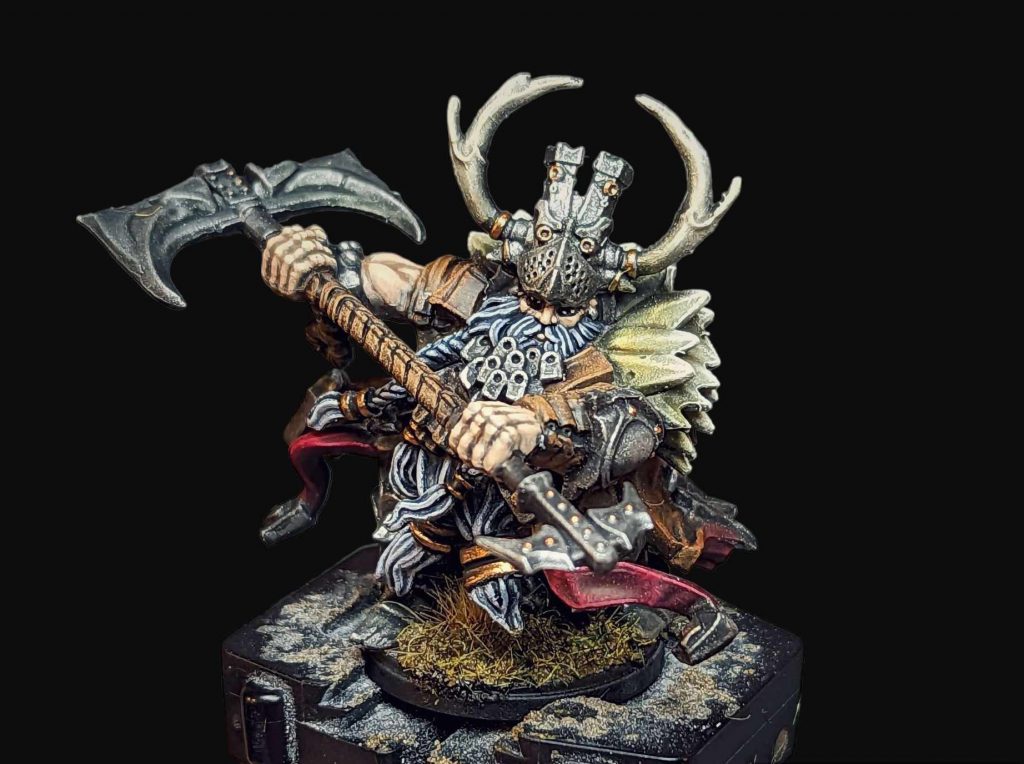
Perhaps the best place to start our exploration, however, is in the best-preserved faction in the game, the Dweghom. They were originally crafted by dragons as master artisans and loyal servants, but the story of how they came to be the Dweg we now know and love is one of rebellion and transformation. Once bound to their dragon masters, they were forced into the depths of the earth where they discovered War, a terrifying abstract concept made incarnate, bound within the planet. This encounter altered them forever, infusing the Dweghom with the primal forces of Fire and Earth. Physically and spiritually transformed, they rose from the depths, not as mere rebels but as equals to their former masters, waging a cataclysmic war that ended in the annihilation of at least some of the dragons (watch this space, I suppose) and the Dweghom’s emergence as a standalone race of independent warriors.
Dweghom society is split into three main factions who operate in a permanently-shifting Balance. We have the Ardent, who embody war and martial pride. Alongside them, the Tempered seek control over the elemental powers gifted by War. Finally, the Clans, the general population, seek to prove their worth not through hard work, which they connect viscerally with their enslavement to the dragons, but through great deeds of bravery and skill that are measured in Aghm, remembered through supernatural means by specialist Mnemancers.
The Dweghom live in Holds that also act as monuments to their victories over dragons and symbols of their freedom. They’re built on the sites of ancient battles and as a result the very landscapes surrounding them are harsh and treacherous, shaping the resilience of the Dweg. Their craftsmanship is on display through the dark and labyrinthine Holds, filled at every turn with tombs and relics of past heroes. Each Hold operates as an independent fortress, governed by its own set of rules and rivalries that leads to no small amount of conflict within the Dweg populace, yet the entire faction remains united in their collective disdain for their ancient enemies and any outsiders who threaten their way of life.
The Dweghom are also well-known within the world of Eä as the only faction that has caused one of the great Spires to fall, so let’s look at the Spires next.
Spires

The Exiles’ primary presence on Eä is felt through the playable faction of the Spires. While we know of the presence of other Exile descendants and are expecting the Weaver Courts in particular to appear on the Conquest tabletop at some point, the Exiles’ plan to find a way back home in an act known as the Reclamation exists through the Spires. Their direct descendants are known as the Sovereign House, which is one of the sub-factions that can be accessed when playing the Spires.
The title “Spires” relates to the towering structures scattered across the land. They were built by the Exiles as scientific research stations, but have become a place of refuge for the Sovereign House, but they don’t live there alone. The Directorate is the scientific backbone of the Spires, publicly portraying themselves as the servants of the Sovereign House but privately pursuing their own schemes. Their power lies in their mastery of Biomancy, a science that allows them to create cloned soldiers all the way through to great monsters. Their true ambition is to break free from the old nobility’s control and claim Eä for themselves.
The Sovereign House and the Directorate are accompanied by the Underspire, the population of the underground hive cities populated by the lowest-ranking members of society, known as Pheromancers. Rather than manipulating biological tissue directly, the Pheromancers use chemical signals to control mindless drones. They have no influence within the Spires themselves, but the Pheromancers’ control over the basic functions of the Spires makes them critical to their overall stability, which leads to them largely being ignored by the more powerful sub-factions.
As I write this article, internal conflicts and external pressures have begun to destabilise the Spires. Young upstarts within the Sovereign House known as the Merchant Princes have started to trade outside of the Spires, disrupting the power structures that have been in place for millennia. Tensions between the Sovereign House and the Directorate are reaching a breaking point. The drones seem to have developed a quasi-religion that threatens an uprising.
In short, the Spires are in a delicate state of Balance.
Nords
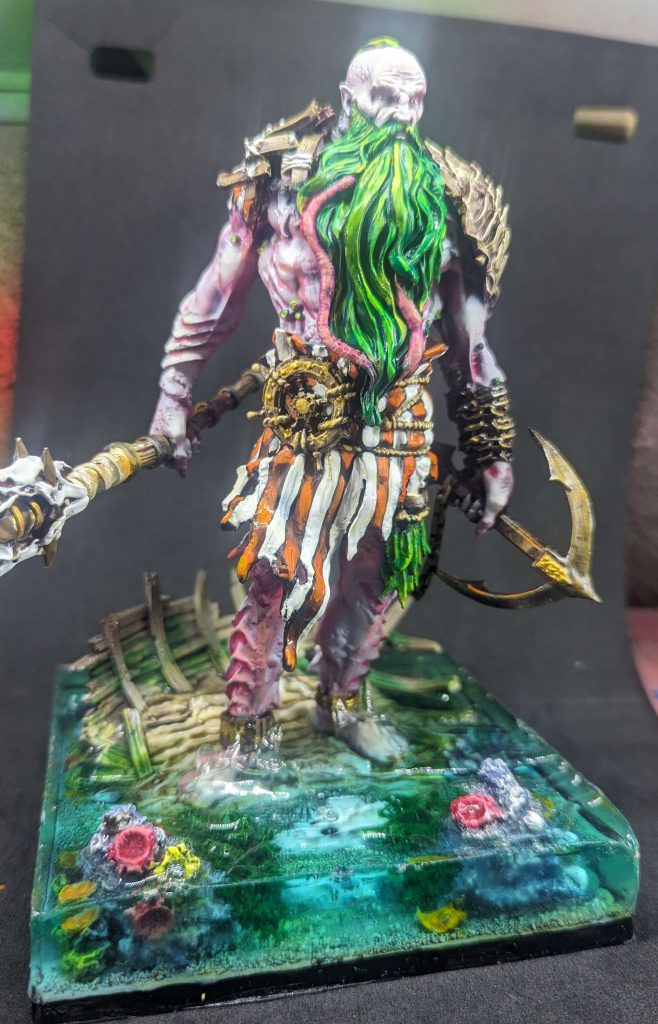
The Nords, hailing from the harsh and frigid lands of Mannheim to the north of the realm of the Hundred Kingdoms, will surprise no-one as a Viking-inspired warrior people forged as much by the frigid climate as they are by ancient grudges. Their ancestors were originally ruled by the Vanir and Aesir, god-like beings who fought dragons and subjugated the giants known as the Jotnar. A catastrophic event known as Ragnarok was the fall of the Vanir and Aesir, leaving the Nords to fend for themselves against the avenging Jotnar and leading them to become the ultimate survivors. They live in a constant state of anxiety as a result, preemptively attacking one another and their southern neighbours in an attempt to protect their own lands.
Nords society is deeply divided between various factions and clans, known as Aettir. Shamans, who seek to lead through appealing to tradition and counsel, often find themselves clashing with the Valkyries, who claim loyalty to the old gods. And the touch of the Spires is present, as the Nords present such a generous harvest of biomass that’s led to the creation of the Einherjar. These now act as powerful leaders, many having become more beast than man, offering leadership based purely around brute strength.
The Nords are undoubtedly aggressive seafaring raiders, but they are more than that, constantly in search of glory and honour through acts of exploration and bravery. Away from the battlefield they are resilient and resourceful in their ability to survive in such harsh conditions, maintaining the all-important Balance that reigns over Eä.
W’adhrŭn
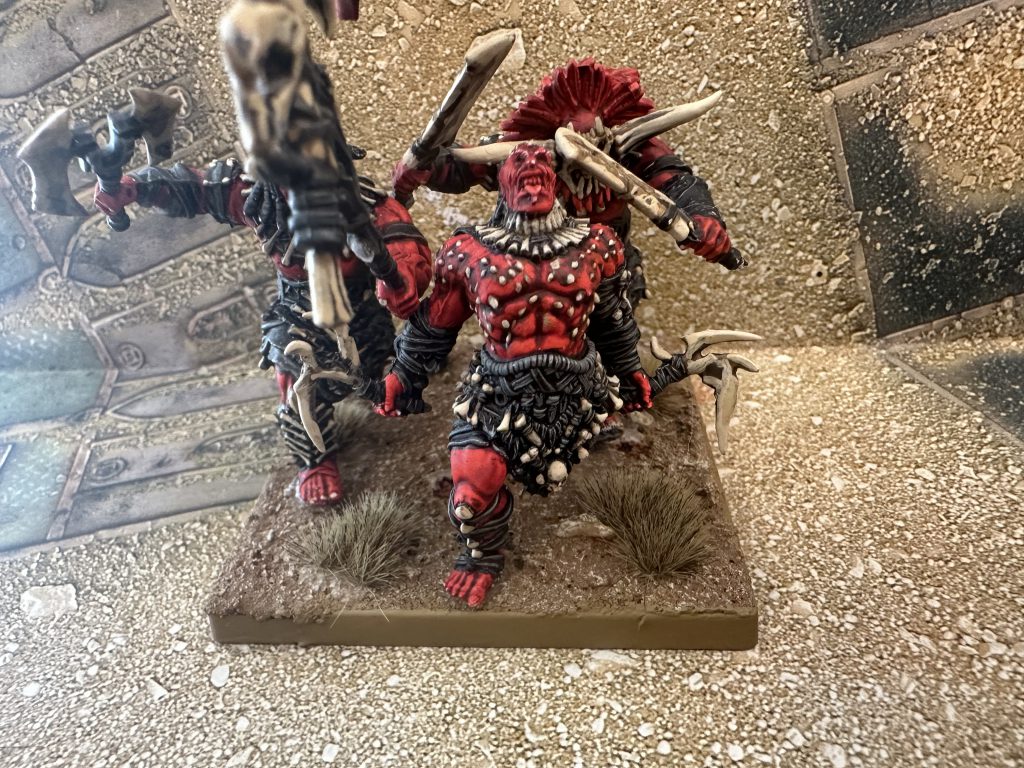
The W’adrhŭn are instantly recognisable as orcs riding dinosaurs, a cartoon-style meme of a wargaming army that doesn’t feel at all cartoony when looking at their history. A repeatedly-failing project by the Spires to create a warrior race led to the literal creation of archetypes, which were abandoned by the Spires as they fled the collapse of a Spire at the hands of the Dweghom. These prototypes, rapidly evolving alongside ancient creatures’ DNA in the midst of the Spires’ biomancy ingredients led to the W’adrhŭn, human-like yet over seven feet tall and with a uniquely resilient physique and heightened hearing.
The ability for the W’adrhŭn to hear so well has led to communication on the battlefield taking place predominantly through the chanting of battlecries. More than that, some individuals, known as Speakers, have even developed the ability to directly communicate with the prehistoric creatures of the land, forging strong bonds that have become crucial to the development of W’adrhŭn society.
Their society is highly structured, with a deep respect for both warriors and those who labour to provide food for the tribe. The majority of the W’adrhŭn are “Bound” to their tribe, vital to their survival by gathering food and resources. Despite their violent origins, the W’adrhŭn have evolved into a people of great complexity. The Ukunfazane, their living goddess, has worked to temper their innate violence, directing their primal urges into structured cults that embody the forces of War, Death, Famine, and Conquest, the prototypes originally created by the Spires.
Leadership of the W’adrhŭn is shared among a council of a Chieftain, a Matriarch, and representatives of the cults that see their genesis in the original Spires prototypes. This balance of power ensures that the needs of all groups are considered, though true leadership rests with the Ukunfazane. Under her rule, the W’adrhŭn have formed a complex civilisation that values strength, survival and ingenuity.
Old Dominion

The Old Dominion was a once-great empire that suffered a tragic fall following the collapse of its god, Hazlia. The Dominion was originally a powerful and sprawling civilisation that dominated the continent of Alektria, but Hazlia began a descent into madness after feeling betrayed by his people, which drove him to seek revenge by unleashing death and destruction. He formed an unholy fusion with Death itself, creating Undeath and reviving the corpses of the dead with his essence. This gave rise to legions of undead warriors, driven by a singular objective: Annihilate the living.
Hazlia’s fall triggered widespread chaos and devastation, particularly in the city of Capitas, where the aftermath saw the formation of dark cults and the resurrection of powerful individuals known as the Anointed. These figures, each bearing a portion of Hazlia’s power, formed the core of the Old Dominion’s undead leadership, ruling over the remnants of Hazlia’s kingdom. But nothing on Eä operates smoothly and a delicate tension formed between them, held in Balance only by equal and opposite forces.
Following Hazlia’s fall, preachers began to question the legitimacy of Hazlia’s rule, and alternative faiths emerged that at times outright rejected the rigid dogma of the past. Internal religious and political conflicts arose, leading to a great number of refugees fleeing the Dominion. One man who was particularly influential in this movement was Platon, a philosopher-king within the Old Dominion who later changed his name to Constantius Domulexor. He dedicated his life to preserving human knowledge in the wake of Hazlia’s Fall, and as the refugee movement started he orchestrated the transfer of the Old Dominion’s libraries and resources into what would become the City States, so let’s look at them next.
City States
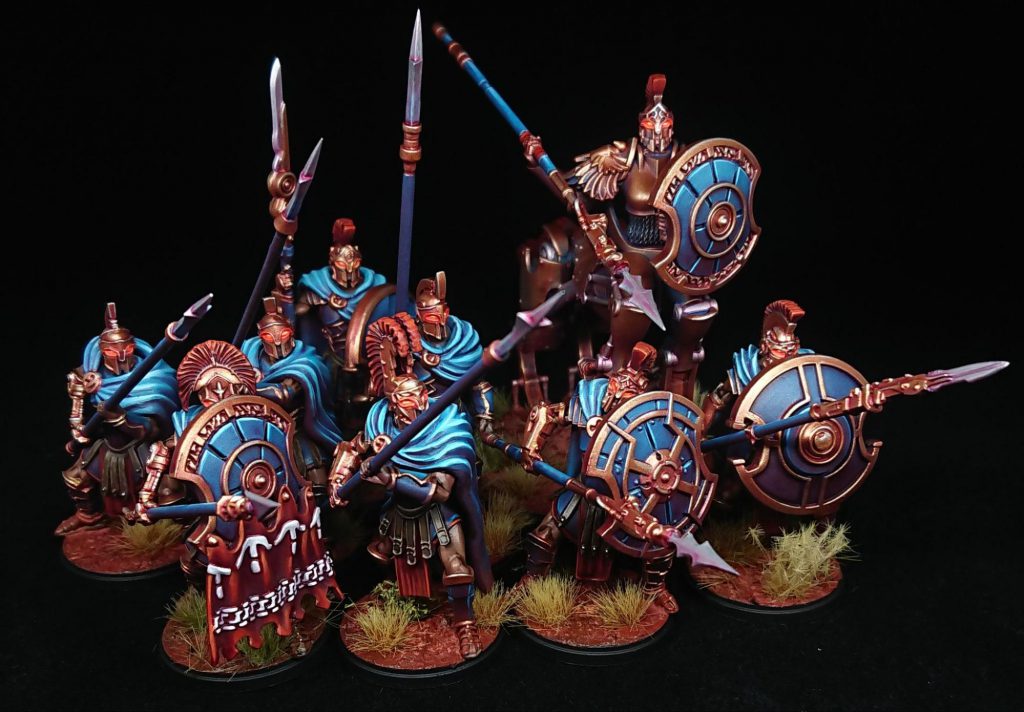
One of Constantius’s first acts was to send primordial seeds to each city away from the Old Dominion as it was established, which would grow into patron gods to protect them from Hazlia’s influence and lay the groundwork for human advancements in “archemy,” a major technological breakthrough for humanity.
But these strong foundations were undermined by Constantius’s overconfidence, which left the knowledge transfer incomplete. Instead of perfect philosopher-kings to rule these new City States, they were left with fragmented and deficient leaders who quickly became paranoid, hoarding resources and protecting their own rather than focusing on the welfare of mankind.
Today the City States are divided between various factions, including Demagogue, Militarist, and Academic Councils. Some cities remain true to their founding principles, thriving as intellectual and cultural powerhouses, while others have succumbed to corruption or are dominated by their patron gods. There’s a bull god of adventure and combat, who presides over a militarised society that celebrates warfare and glory. Then there’s the City State of Lycaon, which is ruled by gods who broke free from their restraints, establishing divine governance and shaping the lives of their people according to their own whims. Across the City States, the relationship between gods and humans is complex, with worship often reflecting the city’s values and the level of control the gods exert over their followers.
Despite the division and infighting, the City States remain powerful bastions of human civilisation, boasting advanced technology, military prowess, and philosophical achievements. Their armies are formidable, and their industry is fuelled by archemy, the science of manipulating divine energy. Yet, beneath this veneer of power lies deep social division, particularly in the Demagogue Cities, where demagogues manipulate citizens through populism and political manoeuvring. Tensions between humans and the Bred, a race of beast-like creatures integrated into their society, further exacerbate these divisions, with prejudices often leading to violence and social unrest.
Hundred Kingdoms
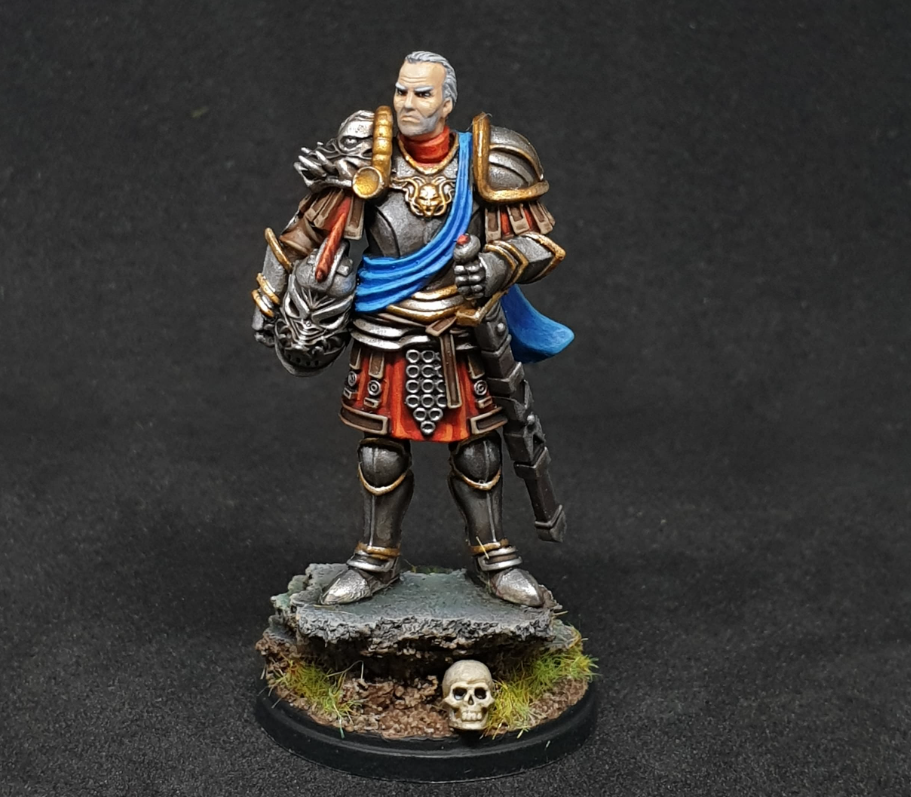
Dodging the bullet of the legacy of Constantius emerges the Hundred Kingdoms, the classic mediaeval-renaissance human faction, which grew from a chaotic mess of communities that developed around feudal lords. Via infighting, allegiances and peace treaties the Hundred Kingdoms eventually experienced a unification of the many kingdoms to fight as one against the many external threats they faced, and still now face.
The Orders, spiritual successors of the last legion of the Old Dominion, the nobility inherited from their history, and the Faiths hold a tension of leadership that provides natural Balance in spite of the ideological differences that are present even within each of these roles. Religious beliefs play a central role in the Hundred Kingdoms, with two primary faiths (the Theist Church and the Deist Creed) vying for influence. The Theists hold a traditional view that blames humanity for the Fall, preaching a return to divine favour through piety and repentance, while the Deists propose a more individualistic approach, suggesting that divinity reflects human nature rather than the other way around. This divide has fostered a deep social and ideological rift, contributing to ongoing conflicts as both sides seek to assert their dominance.
The political landscape is further complicated by the collapse of the Tellian Empire, which briefly united the Kingdoms under one ruler before falling into chaos. The Empire’s dissolution left behind the Hollow Throne, a symbol of the lost unity, and a few key institutions like the Office of the Imperial Chamberlain. Without a strong central power, the nobility is now split between those who seek to revive the Empire and those who wish to see it permanently dismantled.
Sorcerer Kings

The roots of the Fall, and therefore the City States and the Hundred Kingdoms, can be found far to the south and east in the Sorcerer Kings. These powerful rulers bound themselves to elemental forces known as the Incarnate Souls of Balance, harnessing this magic to destroy Hazlia and ultimately raise an entire continent from the seafloor. The four surviving Sorcerer Kings (Erme, Dyelin, Hormus and Alessa) established the Elemental Courts to turn the desolate land into a habitable paradise, while they withdrew from mortal affairs.
The Elemental Courts, initially unified in their efforts to build thriving Enclaves for their mortal followers. But the complexity of the task took over, with intricate hierarchies developing even as the cities themselves reflected a gathering of the most talented individuals and the elemental presence among them. But worship of the Elemental Courts distorted the system, leading to a large group of refugees from the north being shunned to fend for themselves.
The impact of this was that the tribes turned to the goddess Ninuah for survival, thriving on the barren land as nomads and eventually clashing with the prosperous Enclaves over resources. This escalating tension eventually set the stage for a significant confrontation, one that threatened to awaken the Sorcerer Kings and thrust the people out of isolation and back into contact with the civilisations present on Alektria, the continent housing the other factions.
While the Enclaves live in extraordinary luxury due to the blessings of the Elemental Courts, the emerging pressures of the many conflicts to the north now bring a need for Balance as pressure mounts to provide more manpower and magical capability for these expeditions.
Have any questions or feedback? Drop us a note in the comments below or email us at contact@goonhammer.com. Want articles like this linked in your inbox every Monday morning? Sign up for our newsletter. And don’t forget that you can support us on Patreon for backer rewards like early video content, Administratum access, an ad-free experience on our website and more.


